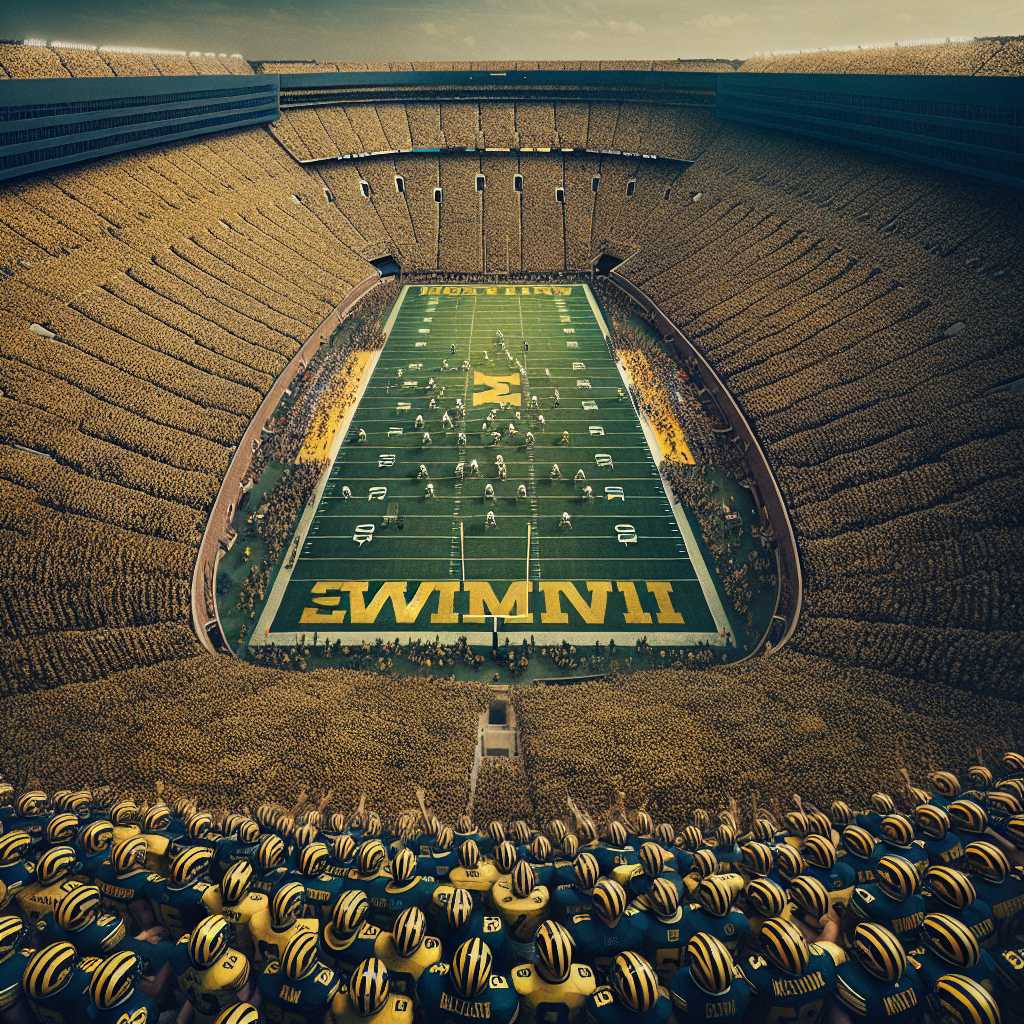The History and Evolution of Michigan Wolverines Football
Michigan Wolverines football represents the University of Michigan in college football at the NCAA Division I Football Bowl Subdivision (formerly Division I-A) level. Known for its rich history, the program has earned a reputation for producing talent that often reaches professional levels and has cultivated an avid fan base. The team participates in the Big Ten Conference and plays its home games at the Michigan Stadium in Ann Arbor, famously known as “The Big House.”
Birth of the Program: 1879 to Early 20th Century
Michigan played its first game on May 30, 1879, against Racine College, making it one of college football’s storied programs. Fielding Yost, one of the earliest coaches, brought the Wolverines into prominence during the early 1900s. Under his guidance, Michigan became a dominant force, bringing innovative strategies to the game and vying for numerous national titles.
Era of Dominance: Yost’s “Point-a-Minute” Teams
Fielding Yost helmed Michigan from 1901 to 1926. His teams were called “Point-a-Minute” because they outscored opponents by wide margins. Their style of play fundamentally changed how football was played, focusing on speed and agility over brute force. During this era, they amassed a series of Western Conference championships and achieved an overall record that remains impressive over a century later.
Maintaining Relevance: Mid-20th Century Challenges and Triumphs
Following Yost’s tenure, Michigan remained a competitive program through several coaching changes. From the Fritz Crisler era introducing platoon football where separate squads handled offensive and defensive duties to Bennie Oosterbaan leading Michigan to another national championship in 1948 – the program constantly evolved to meet the challenges of a rapidly modernizing sport.
Modern Era Leadership: Bo Schembechler and His Legacy
Bo Schembechler’s arrival in 1969 marked another turning point. He is remembered most for his focus on team play, tradition, and character – both on and off the field – as well as for his contribution to “The Ten Year War,” an intense rivalry with Ohio State’s coach Woody Hayes. Under Schembechler’s guidance, Michigan maintained elevated performance and ensured its enduring legacy as a staple of college football.
21st Century Strides: Challenges and Comebacks
In recent years, Michigan has grappled with the ever-increasing competitiveness in college football. Coaching turns from former NFL head coach Rich Rodriguez to Brady Hoke brought mixed results. However, it was not until the arrival of Jim Harbaugh, a former player under Schembechler and successful NFL coach, on December 30, 2014, that Michigan began to recapture elements of its former glory.
The Influence of Tradition: A Unique College Football Culture
The culture surrounding Michigan football is unique and powerful. It is reflected not only in “The Big House,” which is the largest stadium in the United States, but also in traditions like their fabled winged helmet design and spirited fight songs like “The Victors,” often called the greatest college fight song ever composed.
Player Development: Producing NFL Talent and Academic Accomplishments
Michigan has a proud history of developing athletes who go on to successful careers in professional football while also emphasizing academic accomplishment. With multiple Wolverines drafted to the NFL annually and rigorous academic support systems in place for student-athletes, Michigan consistently showcases the balance possible between athletic performance and educational achievements.
Rivalries That Define College Football
No discussion about Michigan football would be complete without acknowledging its storied rivalries. The annual showdown with Ohio State – known as “The Game” – ranks among college football’s most iconic rivalries. Other rivalries against schools like Michigan State and Notre Dame further emphasize how competition fuels passion on the gridiron.
